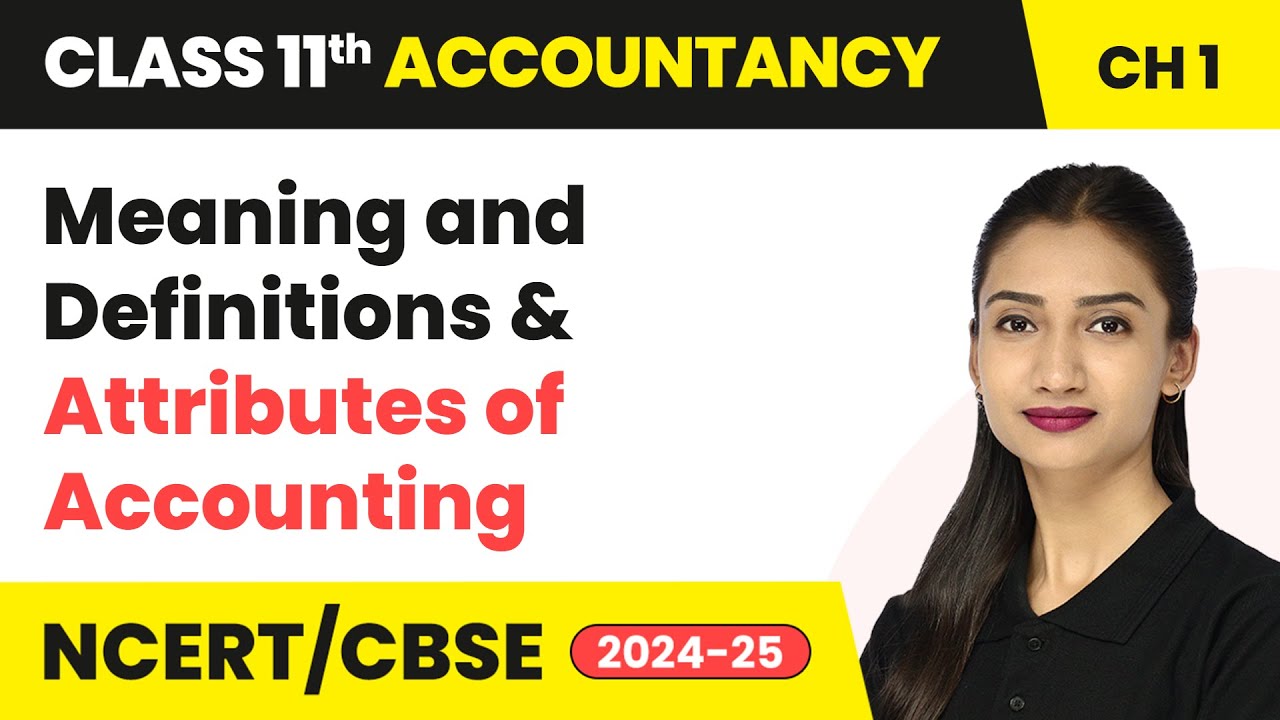Transaction & Analysis Recording, Part I
Summary
TLDRThis video discusses the fundamental phases of accounting, focusing on recognizing transactions as accountable events and recording them properly. It covers essential steps like maintaining source documents, journalizing, and posting transactions to ledgers. The presentation emphasizes the importance of the double-entry system and highlights the phases of accounting: measuring, classifying, summarizing, and interpreting financial data. It also explains the role of source documents such as invoices, receipts, and checks, which are critical for accurate financial reporting and decision-making.
Takeaways
- 🧾 Accounting involves identifying, measuring, classifying, summarizing, and interpreting financial data.
- 📑 Source documents, such as invoices and receipts, are crucial for tracking and recording business transactions.
- 🗂️ The double-entry system brings balance and accuracy to accounting records.
- 📊 There are four phases of accounting: measuring, classifying, summarizing, and interpreting.
- 💼 Recording transactions systematically and in chronological order is fundamental in bookkeeping.
- 📋 The general journal is the book of original entry where business transactions are first recorded.
- 💰 Source documents are used to verify transactions and provide evidence for auditors.
- 📈 The interpretation phase of accounting helps make meaningful decisions by analyzing financial data.
- 💳 Documents like bank statements and purchase orders serve specific roles in recording financial activities.
- 👨💼 Employee attendance is tracked using daily time records (DTR) or biometrics to monitor hours worked.
Q & A
What are the four basic phases of accounting mentioned in the presentation?
-The four basic phases of accounting are measuring, classifying, summarizing, and interpreting financial data.
Why is communication considered important in the accounting process?
-Communication, though not formally considered one of the accounting phases, is crucial because accounting information must be properly communicated to the relevant parties after reports are analyzed.
What is the purpose of source documents in accounting?
-Source documents provide evidence of transactions and events, which are then used as the basis for journal entries. They include items such as sales invoices, receipts, bank statements, and checks.
What role does the double-entry system play in accounting?
-The double-entry system brings balance to the accounting process by ensuring that every financial transaction affects at least two accounts, maintaining equilibrium in the financial records.
What is the difference between official receipts and sales invoices in the Philippines?
-In the Philippines, official receipts are required for the sale of services, while sales invoices are required for the sale of goods. Official receipts confirm payment for services, and sales invoices confirm payment for goods.
What is the significance of the summarizing phase in accounting?
-The summarizing phase organizes financial data after an accounting period, such as a month or year, into a format that is easy to understand for both internal and external users.
How does the classifying phase help in accounting?
-The classifying phase involves sorting and grouping similar items into specific categories or accounts, allowing systematic analysis of recorded data, such as grouping travel expenses under one account.
What is the purpose of a bank statement, and how is it different from a statement of account?
-A bank statement lists all transactions for a bank account over a period, including deposits, withdrawals, and balances. A statement of account outlines transactions between a buyer and a seller, focusing on outstanding balances. The key difference is the issuer: a bank statement is issued by a bank, while a statement of account is issued by a business.
What does 'measuring' in accounting involve?
-Measuring in accounting refers to assigning monetary values (like peso amounts) to accountable economic transactions and events, helping quantify their impact on financial records.
How are checks used in financial transactions?
-Checks direct a bank to pay a specific sum to a designated party. They allow monetary transactions without physical currency exchange, making them safer for transferring large sums of money compared to cash.
Outlines

Dieser Bereich ist nur für Premium-Benutzer verfügbar. Bitte führen Sie ein Upgrade durch, um auf diesen Abschnitt zuzugreifen.
Upgrade durchführenMindmap

Dieser Bereich ist nur für Premium-Benutzer verfügbar. Bitte führen Sie ein Upgrade durch, um auf diesen Abschnitt zuzugreifen.
Upgrade durchführenKeywords

Dieser Bereich ist nur für Premium-Benutzer verfügbar. Bitte führen Sie ein Upgrade durch, um auf diesen Abschnitt zuzugreifen.
Upgrade durchführenHighlights

Dieser Bereich ist nur für Premium-Benutzer verfügbar. Bitte führen Sie ein Upgrade durch, um auf diesen Abschnitt zuzugreifen.
Upgrade durchführenTranscripts

Dieser Bereich ist nur für Premium-Benutzer verfügbar. Bitte führen Sie ein Upgrade durch, um auf diesen Abschnitt zuzugreifen.
Upgrade durchführenWeitere ähnliche Videos ansehen

AKUNTANSI AKUISISI 2 - Harga beli sama dengan Nilai Buku, Kepemilikan Kurang dari 100%

Akuntansi Penjualan Konsinyasi 2 AKUNTANSI BAGI PENGAMANAT

source documents in accounting - part 1 an overview - VCE Accounting

Meaning and Definitions & Attributes of Accounting | Class 11 Accountancy Chapter 1 | CBSE 2024

Akuntansi Dasar | Pengantar Akuntansi | Tutor Aja

PENGANTAR AKUNTANSI 1 - JURNAL
5.0 / 5 (0 votes)
